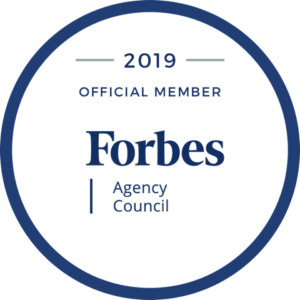by Beth Levine | Feb 15, 2016 | Just Mouthing Off, public speaking, quote, smartmouth talks!
 In the introduction of my book Jock Talk last year, I noted that the business world was suffering from a bad (and performance-inhibiting) case of communication neglect. This year, SmartMouth is offering a cure that can help on the large-scale organizational level or the individual level, but before we dive into that, let’s harken back to my book:
In the introduction of my book Jock Talk last year, I noted that the business world was suffering from a bad (and performance-inhibiting) case of communication neglect. This year, SmartMouth is offering a cure that can help on the large-scale organizational level or the individual level, but before we dive into that, let’s harken back to my book:
“Tolerance of mediocrity in business communication is my pet peeve. It’s not only the mediocrity itself that bothers me, it’s also the acceptance of it and the lack of action taken to remedy it. There are simply too few people calling phooey, or if they are calling phooey, they don’t know how to change things for the better—how to raise the bar.
“I believe you can start with this: Make medal-worthy communication skills a core value. Then get to work on making them a core competency. Organizations hire me to work one-on-one with executives or to train executive teams. Often they come to me with a wish list like this: They’re so long-winded, can you make them more succinct? Can you add some polish and professionalism? They need to make a better impression. Is there any way you can make them sound more commanding? I can, and I usually do. Most of the time what they have been delivering, and how they have been delivering it, has been adequate—not particularly bad, not particularly good, simply adequate. It met the low standard that business audiences have come to expect.
“Well, what is standard in the business world may be adequate, but it’s not optimal and, let’s face it, it shouldn’t be acceptable. Think about how often you roll your eyes during meetings that are too long and, worse, pointless. Think about the boring presentations you’ve sat through—the ones in which you waited for the single valuable nugget, that one answer, that lone call to action that came at minute 52 out of an hour-long talk. Think about the speech by the CEO who was incredibly dry or who mouthed the same old-same old. A bar set at adequate or standard is far too low for organizations that expect excellent outcomes—or aim to be the best in the world.”
Under our traditional model, SmartMouth coached individuals and trained groups out of this rut – in person. But we realized that, as much as we were driven to be evangelists for change in conference rooms and boardrooms everywhere, we couldn’t reach everyone in person.
That’s why we developed SmartMouth OnDemand. Our online communication training lets us offer our insights, strategies and proprietary methodology to anyone who has an Internet connection and a device.
Presentations is our first – and our flagship – course. It is full of games and interactive segments that are only slightly modified from what we do in our in-person group sessions. Best of all, Presentations is loaded with our SpeechBuilder tool – a fill-in-the-blanks form that prompts you to outline your remarks for any occasion – and anyone who takes the course gets lifetime access to the tool. Pretty soon, we will be adding courses that dive in even deeper on topics like Visuals, Delivery and Storytelling.
Online communication training is the future of the industry. Its flexibility, low cost to the user, and effectiveness make it the obvious choice for organizations that want to enact large-scale change in how employees communicate and for individuals with busy schedules and tight budgets.
by Beth Levine | Dec 15, 2015 | Just Mouthing Off

by Beth Levine | Sep 15, 2015 | Just Mouthing Off, preparing for a presentation
 I have it all set up. The camera guy is looking through the lens of his TV studio camera, which is set on a tripod and fixed on the two chairs that face each other. The big-screen monitor for watching instant replays is next to the two chairs. The young NBA player walks into the room after practice. He has showered and dressed in his team sweats, and while everyone else has gone home for the afternoon, he has agreed to submit to some one-on-one media training in advance of what promises to be a busy season on the floor. He’s barely a man in chronological age, but he’s physically huge, at just under seven feet tall. We shake hands; he sits down. I ask him if he’s ready to begin. He says he is.
I have it all set up. The camera guy is looking through the lens of his TV studio camera, which is set on a tripod and fixed on the two chairs that face each other. The big-screen monitor for watching instant replays is next to the two chairs. The young NBA player walks into the room after practice. He has showered and dressed in his team sweats, and while everyone else has gone home for the afternoon, he has agreed to submit to some one-on-one media training in advance of what promises to be a busy season on the floor. He’s barely a man in chronological age, but he’s physically huge, at just under seven feet tall. We shake hands; he sits down. I ask him if he’s ready to begin. He says he is.
The camera is rolling. I hand him an ordinary toothbrush. He looks at me, perplexed, clearly thinking, This is not what I agreed to do for the next two hours.
I ask him only a few questions about the toothbrush: What is that? What do you do with it? Do you like it? How often do you use it? What do you like about it?
He answers haltingly and offers simple, one-word responses.
Then we’re done with the exercise. We watch the instant replay of his “toothbrush interview,” and finally I explain the method behind my madness.
I do the toothbrush exercise with many of my clients, both athletes and executives. It is a defining and memorable exercise, and it is always totally unexpected . . . but not always well received, at least initially. After all, what does a toothbrush have to do with sports or, for that matter, with communicating?
Nothing. But it has everything to do with being able to think about your audience, be yourself, be nice, get to the point, and be prepared for all of the above.
The lesson of the toothbrush exercise is that no matter how mundane, obvious, or self-explanatory the questions or issues are, you need to be prepared at all times to address your audience in a positive, sincere, and robust manner. And there’s nothing more mundane, obvious, or self-explanatory to have to talk about than a toothbrush.
[Excerpted in part from Jock Talk: 5 Communication Principles for Leaders as Exemplified by Legends of the Sports World, www.jocktalkbook.com]
by Beth Levine | Sep 1, 2015 | Just Mouthing Off, preparing for a presentation, public speaking
 I view communication as the everyday currency of business; it’s how we get things done. Our success is ultimately determined by interactions with employees, customers, communities, suppliers, shareholders, regulators, and other stakeholders. And while most organizations and executives have a mission statement, and many articulate a set of core values—for how they conduct their business or treat each other and their customers—most overlook standards, goals, or guidelines for communicating. Communication is actually the channel for executing a company’s mission, its values, and its expectations for excellence, accountability y, productivity and efficiency. How else could these be realized?
I view communication as the everyday currency of business; it’s how we get things done. Our success is ultimately determined by interactions with employees, customers, communities, suppliers, shareholders, regulators, and other stakeholders. And while most organizations and executives have a mission statement, and many articulate a set of core values—for how they conduct their business or treat each other and their customers—most overlook standards, goals, or guidelines for communicating. Communication is actually the channel for executing a company’s mission, its values, and its expectations for excellence, accountability y, productivity and efficiency. How else could these be realized?
A recent study in the Journal of Marketing Communications finds a causal link between communication effectiveness and economic performance. “Companies that align communication with the corporate mission and strategy score significantly better not only on ‘soft’ measures such as image and awareness but also on ‘hard’ economic measures, especially on relative market success in the industry.” In sum, the more effective a company is at communicating—internally and externally—the greater the company’s general performance. Perhaps most telling, the Journal found that companies whose executives support improving communication, and recognize its economic value, performed better than companies without supportive leadership.
Similarly, Cheryl Snapp Conner, @CherylSnapp, recently wrote in Forbes about a new study that finds a connection between a CEO’s presentation skills and the pricing of an IPO. Executives that have a confident and commanding presence actually increase the value of their companies’ IPOs.
A lot of people, including Cheryl Connor, found this pretty amazing – myself included. But it confirmed for me what I have been saying for a long time: that a focus on communication adds value to a company. And I do not mean just some amorphous value of customer and employee goodwill, but actual performance value. Like these two studies show, companies and executives that value and are skilled at communication perform better financially.
[Excerpted in part from Jock Talk: 5 Communication Principles for Leaders as Exemplified by Legends of the Sports World, www.jocktalkbook.com]
by Beth Levine | Aug 5, 2015 | Just Mouthing Off, public speaking, quote
 When Pat Williams @OrlandoMagicPat – a long-time legend in the NBA, most recently as co-founder and SVP of the Orlando Magic – interviewed me about Jock Talk for his radio show on WORL in Orlando, “Inside the Game,” I didn’t know that he too had written a book on public speaking from the vantage point of sports figures.
When Pat Williams @OrlandoMagicPat – a long-time legend in the NBA, most recently as co-founder and SVP of the Orlando Magic – interviewed me about Jock Talk for his radio show on WORL in Orlando, “Inside the Game,” I didn’t know that he too had written a book on public speaking from the vantage point of sports figures.
He told me after the interview that he wanted to send me something. What he sent was his book. As I read through it, I came across a lot of values and concepts he and I held in common.
Because of my work with professional and world-class athletes – and most recently with a medal-winning Olympian – one passage in particular caught my attention:
“There are many retired athletes from various sports who have a lot to offer on the convention and corporate lecture circuit. They could command five-figure speaking fees, but what are they doing? They’re earning a fraction of that, signing autographs at sports memorabilia shows. Nothing wrong with that, but why not take their game to the next level? Why not share the real wisdom that they have to offer? Why not organize their stories and ideas into a presentation that would change lives – including their own?
It’s essentially a matter of organization, planning, and preparation. The only confident, influential speaker is a prepared speaker. Organization and preparation are vital to your success as a communicator.“
Pat has it right. Many retired athletes do miss a great opportunity to tell their story and offer concrete value to corporate audiences.
For any speaker, it can seem daunting to figure out what that value is, but, with a little organization, planning and preparation, it’s definitely doable. Even if you’re not a gold-medal Olympian – but you’re an engineer or a scientist or an entrepreneur – you will still benefit from taking the time and focus to identify your valuable lesson(s) before you speak.
To find your valuable lesson(s), it might help to imagine a Venn diagram: The first circle represents you, your knowledge and expertise, and the second represents your audience and their interests. You have to figure out what’s in the shaded area where the circles intersect. For you, it is an insight or lesson you can offer. For your audience, it is what they want or need. The third circle of the Venn diagram makes it more challenging – it represents what other experts or speakers have to offer.
If you really want to stand out as a speaker, you will spend some time fine-tuning the area of the diagram where you intersect with the audience but other speakers don’t. In other words, given your expertise, what can you talk about that is of interest to your audience that no one else can offer?
For retired athletes, this exercise should be a layup, so to speak. For the rest of us, admittedly it’s more challenging … but it’s well within reach and very worthwhile.
by Beth Levine | Sep 30, 2014 | Just Mouthing Off, quote
“Dignified comportment” – classy, respectful, present, unflappable.
In the months leading up to Derek Jeter‘s much-anticipated retirement on Sunday, nearly all media coverage has mentioned, if not focused on, Jeter’s clean record of behavior. He’s never made trouble, nor has he ever made any outrageous or controversial comments. In 20 years. In New York.
In The New York Times Sports Sunday this past weekend, Dan Barry and Ken Schwencke wrote a piece entitled “With His Words and Deeds, Jeter Never Entered Foul Territory.” In it, they wrote, “Jeter’s ability to maintain a posture of sustained inscrutability – or, if you must, dignified comportment – has extended especially to the spoken word.”
“In a major league career that dates to the Clinton administration’s first term … inquiring reporters have gathered around Jeter in the clubhouse thousands of times. He has maintained eye contact, answered nearly every question posed to him – and said nothing. This is not a complaint, but rather an expression of awe; of admiration, even.”
Even – or especially – in difficult times, when you might be facing criticism or uncomfortable questioning or dealing with bad news, think of Jeter’s example. Dignified comportment. Turns out, it’s career-defining.
 In the introduction of my book Jock Talk last year, I noted that the business world was suffering from a bad (and performance-inhibiting) case of communication neglect. This year, SmartMouth is offering a cure that can help on the large-scale organizational level or the individual level, but before we dive into that, let’s harken back to my book:
In the introduction of my book Jock Talk last year, I noted that the business world was suffering from a bad (and performance-inhibiting) case of communication neglect. This year, SmartMouth is offering a cure that can help on the large-scale organizational level or the individual level, but before we dive into that, let’s harken back to my book:

 I have it all set up. The camera guy is looking through the lens of his TV studio camera, which is set on a tripod and fixed on the two chairs that face each other. The big-screen monitor for watching instant replays is next to the two chairs. The young NBA player walks into the room after practice. He has showered and dressed in his team sweats, and while everyone else has gone home for the afternoon, he has agreed to submit to some one-on-one media training in advance of what promises to be a busy season on the floor. He’s barely a man in chronological age, but he’s physically huge, at just under seven feet tall. We shake hands; he sits down. I ask him if he’s ready to begin. He says he is.
I have it all set up. The camera guy is looking through the lens of his TV studio camera, which is set on a tripod and fixed on the two chairs that face each other. The big-screen monitor for watching instant replays is next to the two chairs. The young NBA player walks into the room after practice. He has showered and dressed in his team sweats, and while everyone else has gone home for the afternoon, he has agreed to submit to some one-on-one media training in advance of what promises to be a busy season on the floor. He’s barely a man in chronological age, but he’s physically huge, at just under seven feet tall. We shake hands; he sits down. I ask him if he’s ready to begin. He says he is. I view communication as the everyday currency of business; it’s how we get things done. Our success is ultimately determined by interactions with employees, customers, communities, suppliers, shareholders, regulators, and other stakeholders. And while most organizations and executives have a mission statement, and many articulate a set of core values—for how they conduct their business or treat each other and their customers—most overlook standards, goals, or guidelines for communicating. Communication is actually the channel for executing a company’s mission, its values, and its expectations for excellence, accountability y, productivity and efficiency. How else could these be realized?
I view communication as the everyday currency of business; it’s how we get things done. Our success is ultimately determined by interactions with employees, customers, communities, suppliers, shareholders, regulators, and other stakeholders. And while most organizations and executives have a mission statement, and many articulate a set of core values—for how they conduct their business or treat each other and their customers—most overlook standards, goals, or guidelines for communicating. Communication is actually the channel for executing a company’s mission, its values, and its expectations for excellence, accountability y, productivity and efficiency. How else could these be realized? When Pat Williams
When Pat Williams 

